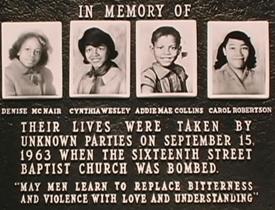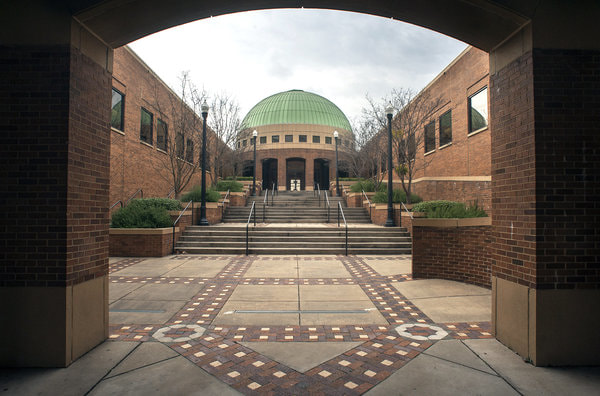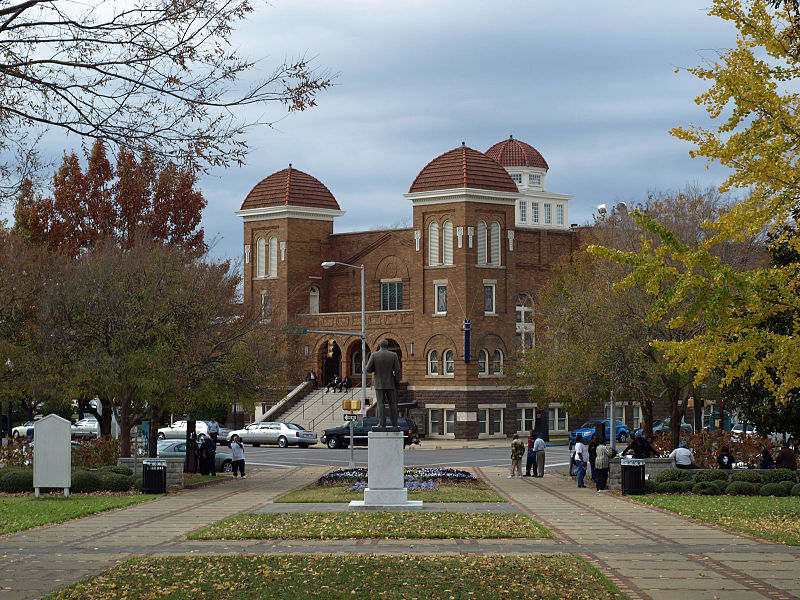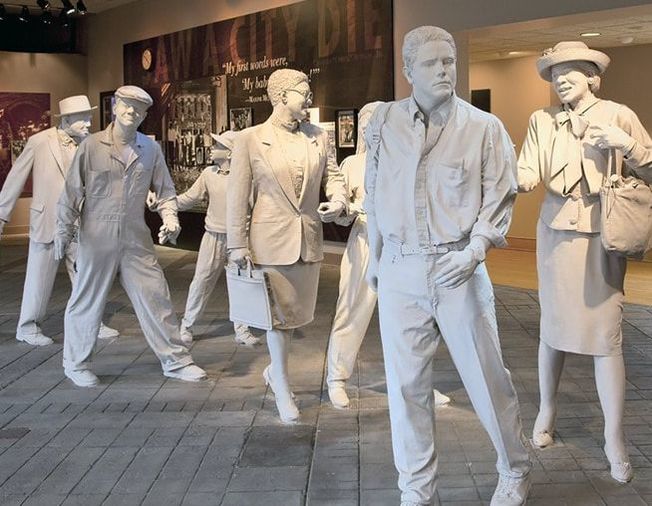June, 22, 2019 (Saturday)
MorningTour Civil Rights District. Birmingham
The Birmingham Civil Rights District is an area of downtown Birmingham, Alabama where several significant events in the Civil Rights Movement of the 1950s and 1960s took place. The district was designated by the City of Birmingham in 1992 and covers a six-block area. Landmarks in the district include: the 16th Street Baptist Church, where the students involved in the 1963 Children's Campaign . Kelly Ingram Park, where many protests by blacks were held, often resulting in recrimination by Birmingham police, Several sculptures in the park depict scenes from those police riots. The Fourth Avenue Business District, where much of the city's black businesses and entertainment venues were located; the area was the hub of the black community for many years. Carver Theatre, once a popular motion picture theater for blacks in Birmingham, now renovated as a live-performance theater and home of the Alabama Jazz Hall of Fame. Our tour of the district will include sites both in and out of the principle Civil Rights district. |
AfternoonSpirit of Birmingham: Lunch
A new 18,000-square-foot food hall and bar “You’re going to see such an ethnic mix of food unlike you’ve seen in one place in this city before,” The food hall at the Pizitz building has e a variety of foods and a bar in the center. The food hall at the Pizitz building will has a variety of foods and a bar in the center. “What to Eat in Birmingham” in coming up with the concept for the food hall. Expect diversity like dumplings, Ethiopian food, coffee, ice cream and maybe a bakery, soul food, a bakery, Middle Eastern food, etc... |
EveningBirmingham Civil Rights Center
We will have the opportunity to share in a guided tour with a docent from the Civil Rights Center.. Birmingham Civil Rights Institute is a large interpretive museum and research center in Birmingham, Alabama that depicts the struggles of the Civil Rights Movement in the 1950s and 1960s. The Institute showcases a walking journey through the "living institution", which displays the lessons of the past as a positive way to chart new directions for the future. The permanent exhibitions are a self-directed journey through Birmingham's contributions to the Civil Rights Movement and human rights struggles. Multimedia exhibitions focus on the history of African-American life and the struggle for civil rights. The Oral History Project, one of the museum's multimedia exhibits, documents Birmingham's role in the Civil Rights Movement through the voices of movement participants. The museum is an affiliate in the Smithsonian Affiliations program. |






